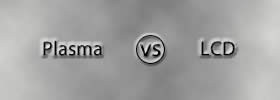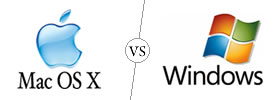Difference between Nexus 10 and iPad
Key difference: The Nexus 10 is a tablet computer running Android 4.2 (also named Jelly Bean) operating system, which was released with it. It was developed in collaboration with Samsung. iPads have the screen size of 9.7 inches with multi-touch display. iPads are intended as devices for a multimedia experience, reading e-books, watching movies, listening to music, playing games, browsing the Internet, or retrieving e-mail.
 With the constant upgrade in technology these days, new models of smartphones as well as upgraded models of smartphones with new features are being constantly launched in the market. Smartphones have become a way of life for many people, allowing them to do anything and everything on the go. This includes typing up a document, chatting with friends, video conferencing, writing up reports, checking e-mails, etc.
With the constant upgrade in technology these days, new models of smartphones as well as upgraded models of smartphones with new features are being constantly launched in the market. Smartphones have become a way of life for many people, allowing them to do anything and everything on the go. This includes typing up a document, chatting with friends, video conferencing, writing up reports, checking e-mails, etc.
One of the most popular operating systems for smartphones and tablets is Android. Android is a Linux-based operating system owned and operated by the Open Handset Alliance, a consortium of 84 leading firms, which includes mobile handset makers, application developers, some mobile carriers and chip makers. The consortium is lead in part by Google, as well as HTC, Sony, Dell, Intel, Motorola, Qualcomm, Texas Instruments, Samsung Electronics, LG Electronics, T-Mobile, Sprint Nextel, Nvidia, and Wind River Systems.
A number of these companies’ smartphones and tablets run on Android. Android is an open source software, which means that the code is freely available for modification and distribution by device manufacturers, wireless carriers and enthusiast developers. Among the number of various companies, Google has also launched its own line of smartphones based on Android, called the Google Nexus. Each device in the Nexus line is produced via collaboration between Google and a leading original equipment manufacturer (OEM) partner.
The Nexus devices in general have an advantage over other devices in that the Android in the Nexus devices is pure. I.e. the Android does not have any manufacturer or wireless carrier modifications to it, such as a custom graphical user interface. The Android also has an unlockable bootloader to allow further development and end-user modification, all of which is usually blocked on other Android smartphones.
The Nexus 10 is a tablet computer running Android 4.2 (also named Jelly Bean) operating system, which was released with it. It was developed in collaboration with Samsung. It is Google’s second tablet, directly following the Nexus 7. It features a 10.1-inch, 2560×1600 pixel display, which at the time of its release was the highest resolution display for a tablet.. The Nexus 10 features a Samsung Exynos 5250 system on chip, a dual-core 1.7 GHz Cortex A15 central processing unit and a quad-core ARM Mali T604 graphics processing unit. The Nexus 10 was launched in two storage sizes, 16 GB and 32 GB
The Nexus 10 features Photo Sphere, a new camera technology that allows one to take 360 deg Panorama shots. The tablet also features a quick settings menu, allows for application of widgets on the lock screen, as well as gesture typing; an updated version of Google Now; and multiple user accounts for tablets.
 Apple originally launched iPad in 2010. Its launch started a new trend for tablets. iPad is a type of tablet PC, which was originally promoted as a cross between an Apple iPhone and iPod Touch with added capabilities of computing. However, it is not meant to be a replacement for desktop personal computers or laptops. iPads have computational properties that can do some tasks as laptops but not all.
Apple originally launched iPad in 2010. Its launch started a new trend for tablets. iPad is a type of tablet PC, which was originally promoted as a cross between an Apple iPhone and iPod Touch with added capabilities of computing. However, it is not meant to be a replacement for desktop personal computers or laptops. iPads have computational properties that can do some tasks as laptops but not all.
iPads have the screen size of 9.7 inches with multi-touch display. iPads are intended as devices for a multimedia experience, reading e-books, watching movies, listening to music, playing games, browsing the Internet, or retrieving e-mail. It has a software structure more like that of a mobile phone. It also has a very simple user interface, which can even be easily operated by children. . iPads are available with a memory capacity of 16 GB, 32 GB, 64 GB and 128 GB.
The iPad is available in models supporting only Wi-Fi, or 3G and Wi-Fi. However, iPad lacks Flash, software that a number of websites use to display content. So, iPad cannot load these pages. This limits the web surfing experience.
The information for the detailed table about the two phones has been taken from the Google Nexus website, Apple website and GSMArena.com.
|
|
Nexus 7 |
iPad (4th generation) |
|
Launch Date |
June 27, 2012 |
November 2, 2012 |
|
Company |
Google; designed in collaboration with and manufactured by Asus. |
Apple |
|
Size |
198.5 x 120 x 10.5 mm (7.81 x 4.72 x 0.41 in) |
241.2 x 185.7 x 9.4 mm (9.50 x 7.31 x 0.37 in) |
|
Display |
LED-backlit IPS LCD capacitive touchscreen, 16M colors |
LED-backlit IPS LCD, capacitive touchscreen, 16M colors |
|
Screen |
800 x 1280 pixels, 7.0 inches (~216 ppi pixel density) |
1536 x 2048 pixels, 9.7 inches (~264 ppi pixel density) |
|
Protection |
Corning Glass |
Scratch-resistant glass, oleophobic coating |
|
Weight |
340g (11.99 oz) |
652g (1.44 lb) 662g (1.46 lb) for 3G model |
|
2G Network |
GSM : 850/900/1800/1900 |
(Wi-Fi + Cellular Model) GSM 850 / 900 / 1800 / 1900 - A1459/ A1460 (Wi-Fi + Cellular Model) CDMA 800 / 1900 / 2100 - A1460 |
|
3G Network |
WCDMA : 850/900/2100 |
(Wi-Fi + Cellular Model) HSDPA 850 / 900 / 1900 / 2100 - A1459/ A1460 (Wi-Fi + Cellular Model) CDMA2000 1xEV-DO - A1460 |
|
4G Network |
No |
(Wi-Fi + Cellular Model) LTE 700 MHz Class 17 / 1700 / 2100 - A1459 (Wi-Fi + Cellular Model) LTE 700 / 850 / 1800 / 1900 / 2100 - A1460 |
|
GUI |
Pure Android |
iUI |
|
CPU speed |
Quad-core 1.2 GHz Cortex-A9 |
Dual-core 1.4 GHz |
|
GPU |
ULP GeForce |
PowerVR SGX554MP4 (quad-core graphics) |
|
OS |
Android OS, v4.1 (Jelly Bean), upgradable to v4.2.1 (Jelly Bean) |
iOS 6 |
|
Chipset |
Nvidia Tegra 3 |
Apple A6X |
|
RAM |
1 GB RAM |
1 GB RAM |
|
SIM Size |
Micro-SIM for 3G model |
Micro-SIM for 3G model |
|
Internal Memory |
16/32 GB storage |
16/32/64/128 GB |
|
Expandable Memory |
None |
None |
|
Sensors |
G-Sensor, Light Sensor, Gyroscope, E-compass, GPS, NFC, Hall Sensor |
Accelerometer, Gyroscope, compass |
|
Connectivity |
|
Wi-Fi + Cellular Model
Wi-Fi + Cellular Model (MM)
All Models
|
|
Data |
WiFi, NFC, USB GPRS, EDGE for 32GB + Mobile data version only |
WiFi, USB GPRS, EDGE, LTE for Wi-Fi + Cellular Model |
|
Speed |
HSPA+ 21 Mbps |
DC-HSDPA, 42 Mbps; HSDPA, 21 Mbps; HSUPA, 5.76 Mbps, LTE, 73 Mbps; EV-DO Rev. A, up to 3.1 Mbps |
|
WLAN |
Wi-Fi 802.11 b/g/n |
Wi-Fi 802.11 a/b/g/n, dual-band, Wi-Fi hotspot |
|
Bluetooth |
Bluetooth V3.0 |
Bluetooth v4.0 with A2DP |
|
USB |
Micro-USB |
USB v2.0, special lightening charger |
|
Primary Camera |
1.2 MP |
5 MP, 2592 x 1944 pixels, autofocus |
|
Secondary Camera |
None |
Yes, 1.2 MP, 720p@30fps, face detection, FaceTime over Wi-Fi + Cellular |
|
Video |
720p |
1080p@30fps, video stabilization |
|
Camera Features |
Video-calling |
Touch focus, geo-tagging, face detection |
|
Audio supported formats |
MP3/WAV/eAAC+/WMA player |
AAC (8 to 320 Kbps), Protected AAC (from iTunes Store), HE-AAC, MP3 (8 to 320 Kbps), MP3 VBR, Audible (formats 2, 3, 4, Audible Enhanced Audio, AAX and AAX+), Apple Lossless, AIFF and WAV |
|
Video supported formats |
MP4/H.264 player |
H.264 video up to 1080p, 30 frames per second, High Profile level 4.1 with AAC-LC audio up to 160 Kbps, 48kHz, stereo audio in .m4v, .mp4 and .mov file formats; MPEG-4 video up to 2.5 Mbps, 640x480 pixels, 30 frames per second, Simple Profile with AAC-LC audio up to 160 Kbps per channel, 48kHz, stereo audio in .m4v, .mp4 and .mov file formats; Motion JPEG (M-JPEG) up to 35 Mbps, 1280x720 pixels, 30 frames per second, audio in ulaw, PCM stereo audio in .avi file format |
|
Battery Capacity |
Non-removable Li-Ion 4325 mAh battery |
Built-in 42.5-watt-hour rechargeable lithium-polymer battery |
|
Available Colors |
Black |
Black, White |
|
Messaging |
Email, Push Email, IM, RSS |
iMessage, Email, Push Email, IM |
|
Browser |
HTML5 |
HTML (Safari) |
|
Radio |
No |
No |
|
GPS |
Yes |
with A-GPS support and GLONASS |
|
Java |
None |
None |
|
Additional Features |
|
|
Image Courtesy: androidheadlines.com, pluggedin.co.uk









Add new comment